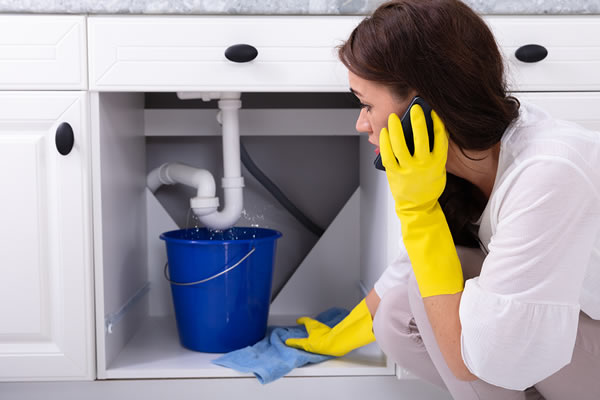Overview To Water Leak Detection At Home
Overview To Water Leak Detection At Home
Blog Article
Do you find yourself on the lookout for details around Detecting hidden plumbing leaks?

Early discovery of dripping water lines can alleviate a prospective disaster. Some little water leaks may not be noticeable.
1. Examine the Water Meter
Every residence has a water meter. Examining it is a guaranteed way that aids you find leaks. For beginners, shut off all the water sources. Make certain no person will flush, make use of the faucet, shower, run the cleaning maker or dishwashing machine. From there, go to the meter and also watch if it will certainly change. Given that nobody is using it, there need to be no motions. If it moves, that shows a fast-moving leakage. Similarly, if you spot no changes, wait a hr or two and also inspect back again. This means you might have a slow leakage that could even be below ground.
2. Check Water Usage
Analyze your water expenses and also track your water consumption. As the one paying it, you must notice if there are any inconsistencies. If you find sudden changes, in spite of your usage coinciding, it indicates that you have leaks in your plumbing system. Remember, your water costs need to drop under the same variety on a monthly basis. A sudden spike in your bill suggests a fast-moving leakage.
Meanwhile, a constant boost on a monthly basis, despite the exact same behaviors, reveals you have a slow leak that's additionally slowly rising. Call a plumber to extensively examine your residential or commercial property, especially if you feel a cozy location on your flooring with piping beneath.
3. Do a Food Coloring Test
When it comes to water usage, 30% comes from toilets. If the shade somehow infiltrates your dish during that time without flushing, there's a leak in between the tank and dish.
4. Asses Exterior Lines
Don't neglect to check your outside water lines also. Should water leak out of the link, you have a loosened rubber gasket. One tiny leakage can throw away lots of water as well as surge your water costs.
5. Examine as well as Assess the Situation
House owners need to make it a habit to check under the sink counters as well as also inside cupboards for any type of bad odor or mold growth. These two warnings indicate a leak so timely attention is required. Doing regular examinations, also bi-annually, can conserve you from a major trouble.
A lot more significantly, if you recognize your residence is already old, keep a watchful eye on your heaters, pipes, pipelines and so on. Look for stainings and deteriorating as the majority of devices and pipes have a life span. They will certainly additionally naturally weaken because of deterioration. Don't wait for it to rise if you believe dripping water lines in your plumbing system. Call a specialist plumber right now so you don't wind up with a horrible mess in your house.
Early detection of dripping water lines can alleviate a prospective disaster. Some little water leaks might not be visible. Examining it is a proven method that helps you discover leakages. One tiny leakage can waste bunches of water and increase your water bill.
If you presume leaking water lines in your plumbing system, do not wait for it to intensify.
How to Know If Your Home Has a Hidden Leak
Water Meter Reveals Inexplicable Water Usage
If you’d like to test whether or not there’s a leak somewhere in your home, you can do this using your water meter. Here is how to conduct the test:
Don’t use any water in your home for at least 30 minutes; this also means not turning on faucets or water-using appliances.
Go outside, and check your water meter for activity.
If your water meter shows that there was activity, even though no one was using any water, this proves that there is a leak in your home.Visible Mold or Mildew Growth
Leaks behind walls create moist, dark environments that allow mold and mildew to grow and thrive. Eventually, you might see mold growth forming on the wall closest to a hidden leak.
If mold is growing in an area that receives a high amount of moisture, such as a bathroom, it may simply be an indication that better ventilation is needed. However, if you see mold growth on a wall or the ceiling in an area where you would not expect, you probably have a hidden leak.
Musty, Mildew Odor
Sometimes you might not be able to see the mold or mildew that is growing as a result of a leak. However, the smell can give the problem away just as easily. If you catch a whiff of something musty, there’s a good chance that old water is collecting somewhere in your home that you can’t see.
Stained/Warped Walls, Ceilings, or Floors
When your home soaks up water, a variety of red flags can become visible, including ceiling stains, bubbling drywall, warped walls, and sagging floors. While these issues can be caused by excess humidity, they can also be signs that a pipe or plumbing connection has started leaking behind your walls.
Inexplicably High Water Bill
After a while, you get a general sense for what your water bill should be. If you own a pool or sprinkler system, your bill will tend to be higher during summer. However, if you receive a water bill that seems especially high, and you can’t figure out what caused it, then you may have a hidden leak somewhere that’s increasing your bill.
https://www.plumbingjoint.com/blog/2019/july/how-to-know-if-your-home-has-a-hidden-leak/

I ran across that write up about Detecting hidden plumbing leaks when exploring the web. In case you enjoyed reading our blog post kindly make sure you remember to pass it around. I praise you for your time. Don't hesitate to check our website back soon.
Report this page